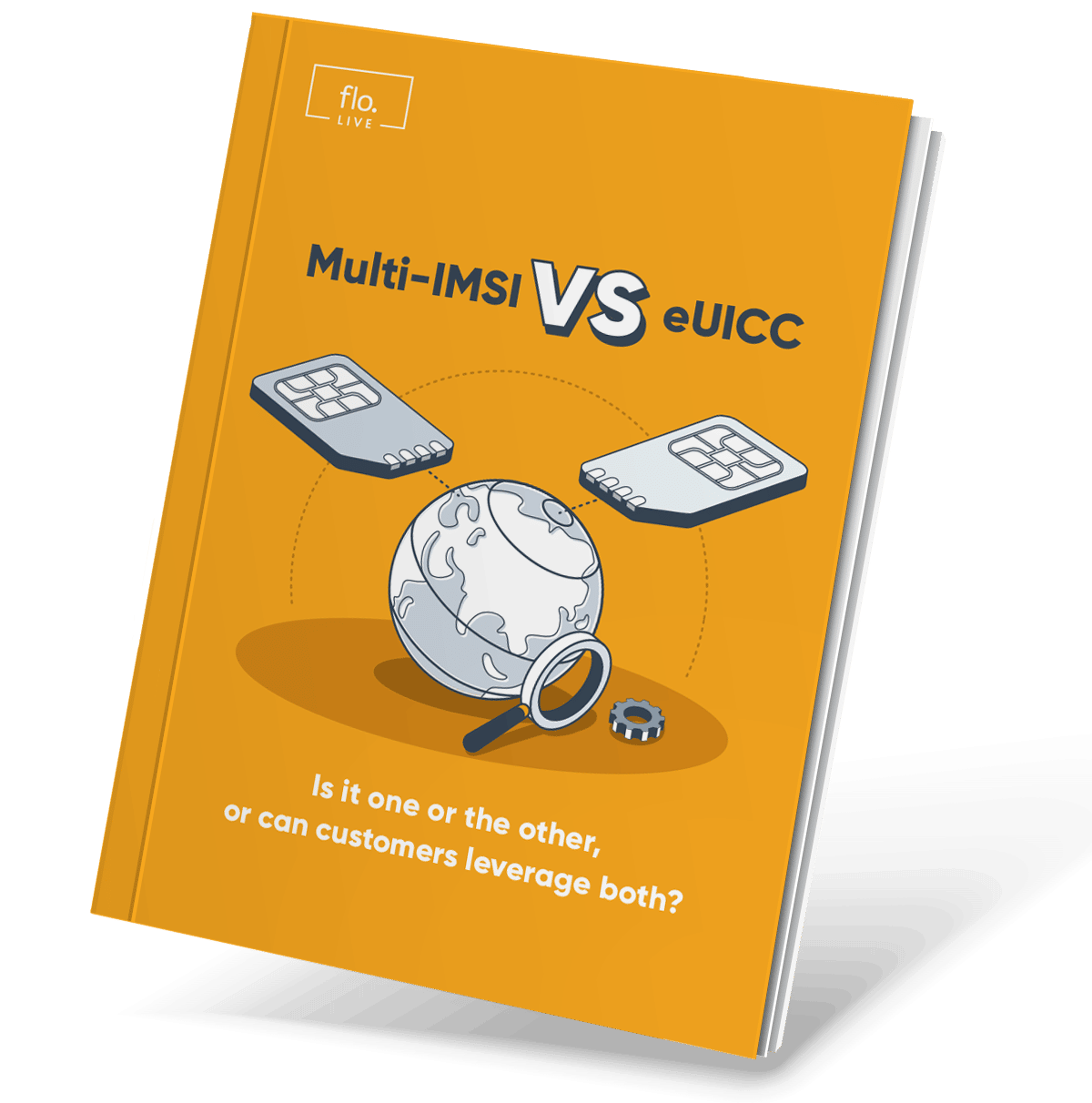PAGE CONTENTS
- What is a Multi-IMSI SIM Card, and How Does it Work?
- What’s the difference between a single IMSI on a SIM card, and multi-IMSI technology?
- What other problems are there with single IMSI SIM cards?
- Is multi-IMSI the same as eUICC profiles?
- Are there any other benefits of a multi-IMSI SIM card that I should consider?
- The floLIVE approach to multi-IMSI connectivity around the world
What is a Multi-IMSI SIM Card, and How Does it Work?
If you’re looking for a quick definition of Multi-IMSI SIM cards, you’re in the right place. IMSI stands for International Mobile Subscriber Identity, which is the unique number that allows a Mobile Network Operator (MNO) to allow subscribers access to their network. But how does multi-IMSI technology work, and why is it especially relevant for IoT devices? Let’s dive in.

PAGE CONTENTS
- What is a Multi-IMSI SIM Card, and How Does it Work?
- What’s the difference between a single IMSI on a SIM card, and multi-IMSI technology?
- What other problems are there with single IMSI SIM cards?
- Is multi-IMSI the same as eUICC profiles?
- Are there any other benefits of a multi-IMSI SIM card that I should consider?
- The floLIVE approach to multi-IMSI connectivity around the world
What’s the difference between a single IMSI on a SIM card, and multi-IMSI technology?
IMSIs are stored on the SIM card, and so if you have a single IMSI on a SIM, your device will connect to a single MNO, and whoever they have roaming agreements with. That means when your SIM card holds multiple IMSIs, it can hold multiple profiles, too – allowing your SIM to connect to more operators.
This makes multi-IMSI connectivity perfect for IoT device use cases, because an IoT solution is far more likely to travel, needing to connect locally wherever users might be. Think about a Utilities company with smart meters all over a country where no single US operator could cover the whole location, or a cold chain use case where cargo may need to be tracked internationally as it moves across different regions where various operators will support connectivity. In just one journey, IoT devices might need to switch networks multiple times. With a single IMSI solution, they can’t help but lose coverage or experience gaps in service, and yet the business cannot afford to lose coverage or visibility of the devices’ location, or of any other relevant metrics it may be sending via a cloud integration.
What other problems are there with single IMSI SIM cards?
As well as relying on a smaller list of network operators covered by a single IMSI, without a multi-IMSI solution, you’re also opening yourself up to risk in terms of network faults. If your local network or the home network from the MNO goes down, you suddenly have no service at all, which can be catastrophic for critical IoT use cases. With a multi-IMSI applet, your devices can automatically connect to the networks which are held by the other IMSIs, and no harm is done.
Is multi-IMSI the same as eUICC profiles?
The quick answer is, no. While an eUICC SIM can hold multiple operator profiles, you can’t switch seamlessly from one to the other. In fact, when you change your operator, you need to completely move from the previous one, and integrate with a different Subscription Manager Secure Routing service (SM-SR) and the Subscription Manager Data Preparation (SM-DP) for the new operator. As most eUICCs are registered to a specific SM-SR platform, this can add a lot of expense and overhead in integration. Every time you want to add an MNO to your eUICC, each partnership will need to be entered into individually, with a separate contract and service level agreement (SLA) to manage.
In contrast, a multi-IMSI technology solution is all managed through a single connectivity provider, who themselves holds the existing relationships with multiple network operators, each providing their international mobile subscriber identities, and then held in a single SIM. When devices need additional coverage, or a network fault is detected, these profiles can be switched OTA (over the air), allowing for remote SIM provisioning of the new IMSI, in real-time.
floLIVE have created a solution with the best of both worlds, where an eUICC SIM can be used with floSIM in the first profile. This gives the ultimate level of flexibility, without the need for multiple relationships with individual MNOs, but with the freedom to switch to a new vendor where necessary.
Are there any other benefits of a multi-IMSI SIM card that I should consider?
Another great win for IoT customers who utilize multi-IMSI SIM cards is the ability to sidestep over-reliance on roaming agreements. With roaming partners, there are a lot of regulations and hoops to jump through. In some countries roaming is not suitable at all, and in others there is a strict time limit on how long an IoT solution can connect to the networks and remain compliant.
As multi-IMSI connectivity relies on direct relationships with the local network operators, your IoT devices are always using local connectivity, and never need to rely on roaming agreements alone, only as part of a smart, flexible and compliant full connectivity solution. It’s the simplest way to achieve compliant global connectivity that we’ve ever heard of, anyway!
The floLIVE approach to multi-IMSI connectivity around the world
At floLIVE, we have pioneered multi-IMSI technology for IoT devices, and have built our floSIM with ease of use and peace of mind at the forefront of the solution. With a single SIM known as floSIM, and a single vendor relationship, your IoT devices can compliantly cover the world, autonomously switching across multiple profiles and back again where needed, to ensure coverage, availability, low costs, and supreme quality of service.
Want to speak to one of our IoT gurus about how it could fit your business requirements? Let’s schedule a time to talk.









